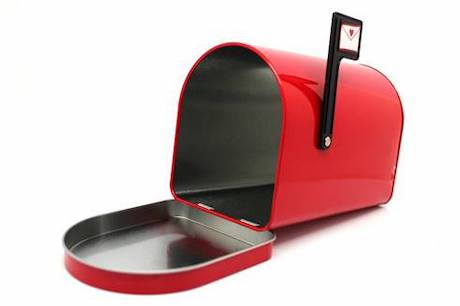
I took a thermal bridging course, and discovered the significant impact it can have on the rated performance of assemblies. How well do building simulation programs model thermal bridging?
– Learning the Ropes
Dear Learning,
Building envelopes are non-homogeneous, so heat transfer through a building envelope is not one dimensional due to thermal bridging. However, thermal bridges cannot be explicitly modeled in most whole-building simulation tools, including EnergyPlus. Therefore, modelers need to somehow account for the impact of thermal bridging in their building models.
Thermal-bridging basics
Structural elements, commonly referred to as framing, in a building envelope, would typically have a significantly higher thermal conductivity compared to that of insulated cavities. This implies that the effective thermal resistance (R-value) of an envelope assembly would be lower than the R-value at insulated cavities. Now the question is how much and how to account for thermal bridging in a building model! To answer building modeling enthusiasts, the industry has developed standard methods.
How much impact on R-value can thermal bridging have? It depends on many factors, such as:
- Amount of framing; the higher the framing factor, the impact of thermal bridging will be more significant. Typically, a building with steel framing would have a lower framing factor compared to a building with wood-framing (stick-built). A study performed by ASHRAE in 2003 found an average framing factor of 25% for all US residential buildings; however, this value can widely vary among buildings.
- The difference in thermal conductivity of framing and insulation: Higher differences in thermal conductivity between framing and cavity insulation leads to higher thermal bridging impact. For instance, a steel-framed envelope with a lower framing factor can have a more significant thermal bridging impact compared to a wood-framed envelope with a higher framing factor because of higher thermal conductivity of steel framing compared to that of wood framing.
There are several online tools by third-party resources that calculate the thermal bridging effect in multi-layer assemblies (including ORNL’s Thermal Wall Calculator, Ekotrope’s Wall Calculator, and the ABTG Steel Wall Calculator).
ASHRAE methods to account for thermal bridging
One accurate method to account for thermal bridging is to develop a thermally equivalent wall described in Modeling Two- and Three-Dimensional Heat Transfer through Composite Wall and Roof Assemblies in Transient Energy Simulation Programs (ASHRAE 1145-TRP) and use in whole-building models. Chapter 25 and 27 in the 2017 ASHRAE Handbook of Fundamentals (also in older versions) describes simpler methods of two-dimensional, steady-state conductive heat transfer analysis through envelope assemblies. Those methods include (1) parallel-path method, (2) isothermal-planes method, and (3) zone method and the modified zone method. The Parallel-path method is used when the thermal conductivity of the dissimilar materials in the layer are rather close in value (within the same order of magnitude), as with wood-frame walls. The isothermal-planes method is appropriate for materials with conductivities moderately different from those of adjacent materials (e.g., masonry). The zone method and the modified zone method are appropriate for materials with a very high difference in conductivity (two orders of magnitude or more), such as with assemblies containing metal. It should be noted that the simplified methods may not accurately account for 3-D heat transfer through envelope assemblies.
An experimental method to evaluate effective R-value
Standard Test Method for Thermal Performance of Building Materials and Envelope Assemblies by Means of a Hot Box Apparatus (ASTM C1363) is commonly followed to determine the steady-state thermal performance of building assemblies. This method accounts for 3-D heat transfer and the effect of any construction imperfections. The experimentally evaluated effective R-values can then be used in whole-building models.
Some other limitations
One challenge to capture the actual performance of non-homogeneous building envelope assemblies in whole-building models is to account for the impact of thermal mass accurately. The methods described in the ASHRAE Handbook of Fundamentals and ASTM C1363 do not provide a guide on how to account for the impact of thermal mass. A straightforward method to roughly account for the thermal mass and thermal bridging on the non-homogeneous building envelope assemblies is to split each exterior building envelopes into two parts; one for the area covered by framing and one for the areas between framing.
Another challenge is to account for heat transfer through corners, terminations of materials, junctures of different materials, etc. Such assemblies cannot be analyzed effectively with explicit calculations. They require 3-D heat transfer simulations using detailed models.
No doubt that capturing heat transfer through complex building envelope assemblies is challenging. However, with some careful considerations in modeling, a modeler can make the simulation results very credible.
Som S. Shrestha, Ph.D., BEMP
R&D Staff Scientist, Building Envelope & Urban Systems Research
Building Technologies Research and Integration Center
Oak Ridge National Laboratory
shresthass@ornl.gov
Do you have anything to add or your own answer to contribute? Please share your thoughts by emailing askamodeler@ibpsa.us; you are an expert too! Do you have your own question for the expert? Submit your question to be considered for a future column. Note that questions requiring an immediate response should be submitted to the community of experts at unmethours.com. If you are interested in replying to a question as a featured expert or have any other feedback about Ask a Modeler please email askamodeler@ibpsa.us.


